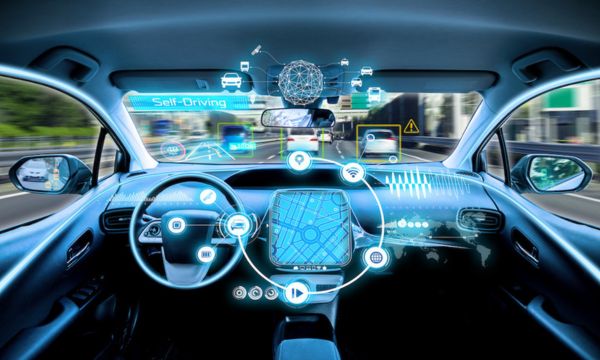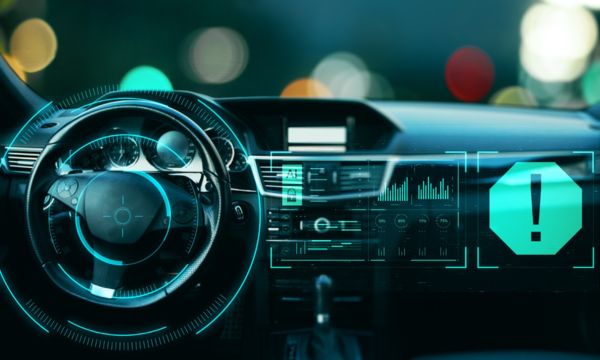AI-Based Driver Monitoring Improves Road Safety and Performance
The automotive industry has undergone dramatic changes in recent years as artificial intelligence (AI) has been built into cars, particularly to help observe drivers.
The development of AI-based driver monitoring systems is a huge step forward in making roads safer, improving vehicle performance, and making driving more personal.
This article takes an in-depth look at AI-based driver monitoring, exploring its key components, its pros and cons, and its wider impact on the automotive industry.
1. Evolution of Driver Monitoring Systems:
In the past, driver monitoring systems have primarily used simple sensors to capture basic signals of driver fatigue or distraction.
Recently, artificial intelligence (AI) has made these systems more sophisticated, making them capable of viewing large amounts of data simultaneously.
Machine learning methods and computer vision techniques are now important to better understand driver behavior.
2. Key Components of the AI-based Driver Monitoring System:
- Facial Recognition: AI-powered driver monitoring systems use advanced facial recognition algorithms to view the features and expressions of a human face. This allows the system to understand whether the driver is drowsy, distracted, or in any other mental state that could affect his or her driving ability.
- Eye tracking: Eye tracking technology is an important part of artificial intelligence monitoring. The driver’s eyes, breathing pattern, and eye movements are looked at to see how alert he is and whether he may be tired.
- Gesture Recognition: Artificial intelligence algorithms can understand users’ gestures, allowing them to operate car systems without using their hands. This not only makes things easier but also reduces distractions, making things safer overall.
- Biometric data integration: Some advanced systems use biometric data, such as heart rate and skin sensitivity, to gain a comprehensive insight into the driver’s mental state. Monitoring systems become more accurate thanks to the extra layer of information.
3. Benefits of AI-based Driver Monitoring:
- Better safety: The main benefit of AI-based driving monitoring is that it makes roads safer. By continuously observing the driver’s behavior, the system can detect signs of fatigue, distraction, or impairment so it can act quickly to prevent an accident.
- Customized driving experience: These systems can change based on how you drive and what you drive. By observing the driver’s behavior, AI can change things like seat position, climate control, and entertainment options to make the driving experience more comfortable and unique.
- Follow the Rules: Due to increasing concerns about road safety, many countries are passing laws requiring the use of car monitoring systems. These regulatory standards can be met in a more advanced and complete manner through AI-based solutions.
- Lower insurance rates: Some insurance companies are considering partnering with automakers to add AI-based ddriver-trackingcapabilities. If these systems can find and support safer driving behaviors, drivers could potentially receive lower insurance rates.
4. Challenges and Considerations:
- Privacy Concerns: Collecting and analyzing people’s biometric data makes people concerned about their privacy. A big question that automakers and technology developers need to solve is finding the right mix between making things safer and protecting people’s privacy.
- Illnesses and errors: AI programs are not perfect, and they can make the mistake of thinking a driver is drowsy when that is not the case. This is called a false positive or false negative. Continuous testing and improvement are the key to reducing these errors.
- Human-machine interaction: When artificial intelligence is built into a car, the machine and the driver must be able to talk to each other without any problems. A major challenge is ensuring that the user interface successfully sends alerts and alerts without causing too much stress or distraction.
- Cost Implications: If advanced AI-based driver monitoring systems are added to cars, it could cost the companies that make them more money. Finding the right mix between improving safety and keeping prices low is important for widespread use.
5. Trends in AI-based Driver Monitoring:
- Emotion recognition: In the future, work can be done to improve emotion recognition so that the system can respond not only to physical signs of fatigue but also to mental states that can make driving more dangerous.
- Integration with self-driving cars: As the automotive industry moves towards self-driving cars, AI-based driver monitoring systems are important to ensure smooth switching between manual and automatic modes. If the driver loses control, the system takes over.
- Cloud-based analytics: Cloud-based analytics allows multiple vehicles to be tracked in real-time, helping fleet managers make better decisions and making the roads safer overall.
- Partnering with wearable technology: Combining AI-based driver tracking with wearable technology can give us a complete way to monitor driver health inside and outside the vehicle.
Conclusion
Artificial intelligence systems for monitoring drivers are a big step towards safer and more efficient road traffic.
As technology continues to change, it is important to address issues such as private issues and make it more cost-effective so that many people can use it.
Research and development continue, but these systems are becoming standard components of modern vehicles. They will make driving safer and more fun for everyone.
FAQs
1. What is AI-based driver tracking?
When artificial intelligence is built into a car to see and understand various information about the driver’s behavior, it is called ‘AI-based driver monitoring’.
This includes looking at your eyes, recognizing your face, recognizing your hand movements, and using biometric data to make driving safer and more fun.
2. What role does facial recognition play in monitoring drivers?
Artificial intelligence algorithms are used to see facial features and expressions for facial recognition in driver monitoring systems.
It helps detect signs of driver drowsiness, distraction, or other mental states and provides real-time information about their health.
3. What role does eye tracking play in the use of artificial intelligence to monitor drivers?
Eye-tracking technology can monitor where a driver looks, how they blink, and how their eyes move.
This knowledge is important to understand a person’s alertness level and detect signs of fatigue, which can help prevent accidents.
4. Why is it important that driver monitoring systems can recognize gestures?
Gesture recognition allows you to operate your car’s systems hands-free, reducing distractions and improving safety.
When the driver makes a gesture, the AI system can understand it, making driving easier and more targeted.
5. What role does artificial intelligence play in making driving more personal?
Artificial intelligence in the driver monitoring system can learn how the driver drives and change settings such as the driver’s seat, climate controls, and entertainment selections.
The purpose of this customization is to make driving easier and more fun.
6. What are the key benefits of using artificial intelligence to monitor drivers?
Key benefits include improved safety by detecting signs of fatigue or confusion, a more personalized driving experience, regulatory compliance, and potentially even lower insurance rates for safer driving.
 Enhancing Safety: AI-Driven Collision Avoidance
Enhancing Safety: AI-Driven Collision Avoidance
As technology continues to change, artificial intelligence (AI) is becoming increasingly important in many areas. One very […]
More Understanding AI in Autonomous Vehicles
Understanding AI in Autonomous Vehicles
Self-driving cars, also known as self-driving cars, are a major technological advancement that relies heavily on artificial […]
More Revolutionizing Driving: AI Integration in Cars
Revolutionizing Driving: AI Integration in Cars
The automotive industry is undergoing a major transformation as artificial intelligence (AI) is applied to cars. As […]
More